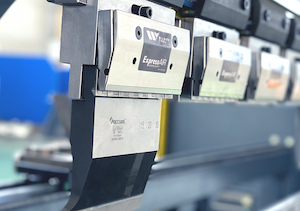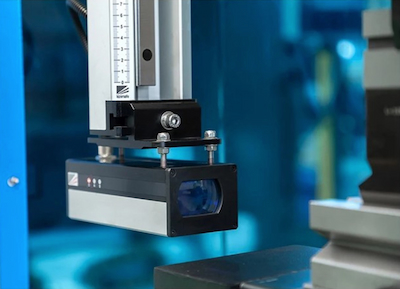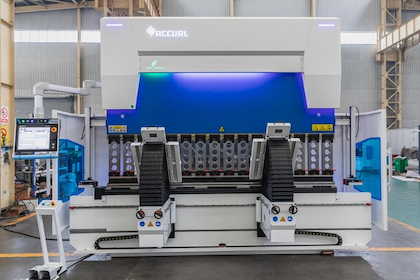How to choose a CNC press brake machine?
Oct 22, 2025
Choosing the right CNC press brake machine can make a big difference in your production efficiency, bending accuracy, and overall profitability. With so many options on the market—each offering different features, tonnage capacities, and automation levels—it’s easy to feel overwhelmed. This guide will help you understand what really matters when selecting a CNC press brake, so you can make a smart investment that fits your business needs.
I. Core Considerations (Basis for Selection)
1. Processing Requirements Analysis (First ask yourself the question)
Material properties
Material: Is it mainly low-carbon steel, or stainless steel, aluminum, copper, etc.? The tensile strength of different materials varies, which affects the tonnage calculation.
Plate thickness: What is the thickness range of the plates you bend most frequently? For example: 0.5mm - 6mm
Sheet size: What are the maximum processing length and width? For example: 3m x 1.5m
Product process requirements
Bending Angle: Usually 90°. Is it necessary to bend obtuse angles, acute angles or complex shapes?
Precision requirements: How high are the tolerance requirements for angles and dimensions? (For example: ±0.5° or ±0.1mm
Production batch size: Is it a small batch with multiple varieties or a large batch with a single product? This is related to the demand for the degree of automation.
The complexity of the parts: Is it necessary to have complex functions such as multi-axis movement of the rear stopper, winding, and dead edge pressing?
2. Key machine parameters (To pay attention to when reading the equipment manual
Nominal pressure (tonnage) : This is the core capability of the bending machine. It must be calculated based on your thickest and hardest material.
Simple calculation formula: P = (650 * S² * L)/V
P: Required pressure (tons)
S: Plate thickness (mm)
L: Bending length (m)
V: The width of the lower die slot (mm), usually taken as 8 times the thickness of the plate.
For example, when bending a 3mm thick and 3-meter-long low-carbon steel plate using a 24mm wide lower die, the required pressure is approximately (650 * 3² * 3) / 24 ≈ 731 tons. Therefore, it is more reliable to choose a machine with a capacity of around 100 tons. It is recommended that the tonnage selected be 20% to 30% higher than the calculated value in case of emergency.
The length of the workbench: It determines the maximum length of the sheet that can be bent. Please select based on the maximum size of your product. Common sizes include 2.5m, 3m, 4m, etc.
Throat depth: It refers to the depth from the bending line to the inner side of the frame. This determines whether the folded side will hit the machine body when bending "box" type workpieces. The deeper the throat opening, the wider the processing range.
Column spacing: The distance between the frames on both sides. The sheet to be bent must be able to be delivered to the rear stopper position through this spacing. This parameter is very important for processing workpieces with bends in the middle, such as "large door frames".
3. Numerical Control System and Automation Configuration (Determining Efficiency and ease of use)
Brand of numerical control system
International well-known brands: such as Accurl, have stable systems, powerful functions and good operation logic.
Selection suggestion: Choose based on the operator's learning cost and budget. Whether the interface is intuitive and whether programming is convenient are important considerations.
Y-axis (slider travel control) : The core axis that controls the bending depth (Angle). It is usually an electro-hydraulic servo system. The number of Y-axes determines whether the slider can remain parallel at different positions. For machines with long countertops, at least two Y-axes (one at each end) are required to ensure accuracy, and high-end models may have three or more.
X-axis (forward and backward movement of the rear stopper) : Controls the bending position. The travel of the X-axis determines the minimum margin that can be bent. The rear stopper of high-end models is divided into multiple sections, which can avoid the already bent edges.
R-axis (rear stopper moving up and down) : It is used to avoid complex workpieces or achieve special processes.
Z-axis (left and right movement of the rear stopper) : Usually, the rear stopper beam is divided into two sections, left and right, which can move independently and is used for folding beveled or asymmetrical workpieces.
Automated selection and matching (significantly enhancing efficiency)
Deflection compensation: When the long table surface is bent, the slider and the table surface will undergo slight deformation due to force, resulting in inaccurate middle angles. The deflection compensation function (hydraulic or mechanical) can automatically counteract this deformation and is a key configuration to ensure the bending accuracy of long workpieces. It is strongly recommended to be equipped with it.
Automatic mold changing: For working conditions where mold changes are frequent, it can greatly save preparation time.
Robots or automatic loading and unloading: Suitable for large-scale and repetitive production, achieving "unmanned" workshops.
Ii. Equipment Type Selection
Upward movement type (arch frame type) : The slider moves downward in the upward direction. The mainstream type features good rigidity and high precision, and is suitable for the vast majority of application scenarios.
Downward movement type: The worktable moves upward. The body has a low center of gravity, good stability and a small floor area, but the operating space is relatively cramped.
Iii. On-site Verification and After-sales Service
Sample testing: Be sure to bring your typical products and plates (especially the thickest, longest, and most demanding ones) to the manufacturer or existing customers for on-site testing.
Check the accuracy and straightness of the bending Angle.
Test the programming convenience of the numerical control system.
Feel the noise and vibration when the machine is running.
Inspect after-sales service: Ask the manufacturer if there are service outlets in your location, how long the response time is, and whether the supply of spare parts is sufficient. Good after-sales service can greatly reduce downtime losses.
if you have more ideas, please contact us!
Tel: +86 -18855551088
Email: Info@Accurl.com
Whatsapp/Mobile: +86 -18855551088


